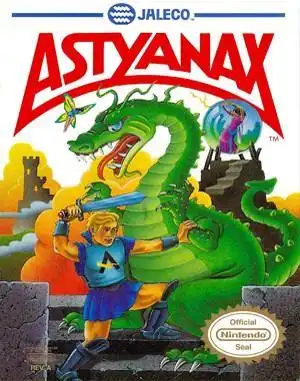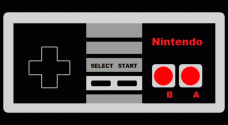Stepping back into the late 80s and early 90s, the arcade scene and the burgeoning home console market delivered countless action-packed experiences. Among them, a title emerged that, while perhaps not reaching the legendary status of a Castlevania or Ninja Gaiden, still holds a special place in the hearts of some retro enthusiasts: Astyanax.
Developed by Aicom and published by Jaleco, Astyanax arrived first in arcades in 1989, followed by a significantly different version for the Nintendo Entertainment System (NES) in 1990. Let's dust off the cartridges and tokens and see what made this game tick, and if it's worth a look today.
What is Astyanax?
At its core, Astyanax is a side-scrolling action-platformer. You take control of a hero tasked with battling hordes of mythical creatures, demons, and bosses across various fantasy stages. Like many games of its era, it required quick reflexes, pattern recognition, and a willingness to learn enemy placements.
However, the story and specific mechanics varied wildly depending on whether you were pumping quarters into the arcade cabinet or blowing on an NES cartridge.
Two Worlds, Two Heroes: The Plot Differences
This is perhaps the most striking difference between the two Astyanax versions. They share a name and a genre, but the narrative is almost entirely separate.
- Arcade Plot: Set in a demon-ruled fantasy world, the hero, Roche, is granted a divine axe. He must journey through treacherous lands to defeat the demon overlord Argos at Castle Algerine and restore peace. A classic, straightforward fantasy quest.
- NES Plot: This version takes a more unique, almost Isekai-like approach before that was a common term. High school student Astyanax is mysteriously transported from Earth to the fantasy world of Remlia. Guided by the fairy Cutie, he must rescue Princess Rosebud from the evil wizard Blackhorn. It's a wild shift from the arcade's pure fantasy.
This divergence means players experienced fundamentally different stories, adding to the distinct feel of each version.
Hacking and Slashing: Gameplay Breakdown
While the plots differed, both versions shared core action gameplay, primarily centered around your main weapon and a unique charge attack mechanic.
The Charge Attack: Power vs. Speed
Your primary attack button could be tapped for quick, weaker swings or held down to charge up a more powerful, flaming strike. This introduced a strategic layer: do you go for faster, less damaging hits, or risk charging up for big damage, potentially leaving yourself open?
Weapons and Magic (NES Version)
The NES version expanded significantly on the arcade's single weapon (an axe) and limited magic. Astyanax on the NES could wield three different weapons:
- Axe: Your starting weapon. Balanced power and speed.
- Spear: Faster than the axe but generally weaker.
- Sword: Slower than the axe but the most powerful.
Weapon power-ups upgraded your current weapon, but losing a life would downgrade it, adding a layer of risk and frustration common in 8-bit games.
Magic was also a key element on the NES, accessed via a pause menu. You had three spells, each consuming varying amounts of magic points (MP):
- Bind: Freezes enemies in place. Useful for crowd control or setting up charged attacks.
- Blast: A close-range burst of fire. Good for nearby groups.
- Bolt: A screen-clearing lightning strike. Your panic button for tough situations.
Managing your MP and choosing the right spell was crucial, especially as weapon choice affected MP consumption.
Arcade vs. NES: Key Differences Beyond Plot
Beyond the story, several other factors set the two Astyanax games apart:
- Players: Arcade offered two-player co-op; NES was strictly single-player.
- Weapons/Magic: NES had multiple weapons and a magic menu system; Arcade had one weapon type and a single thunder attack power-up.
- Level Design: While sharing a similar aesthetic, levels were designed differently for each platform.
- Difficulty & Pacing: The NES version is often noted for a slower pace due to the charge mechanic feeling less fluid than the arcade, and some frustrating platforming/enemy placements.
The Astyanax Experience Today: Hits and Misses
Revisiting Astyanax, particularly the NES version, brings back memories but also highlights some of its quirks and flaws.
Hits:
- Visuals: For a 1990 NES title, the sprites are large and detailed, and the environments are varied and often atmospheric. The bosses, in particular, are creative and imposing.
- Music: The soundtrack is catchy and fits the fantasy theme well, though it can get repetitive.
- Boss Fights: Many boss encounters are memorable and require learning patterns, providing satisfying challenges.
- Nostalgia: For those who played it back then, it's a definite trip down memory lane.
Misses:
- Slowdown: A common issue on the NES, Astyanax can suffer from significant slowdown when multiple enemies or effects are on screen, which can disrupt timing and lead to cheap hits.
- Hit Detection: Can feel inconsistent at times, leading to frustration.
- Platforming: While primarily an action game, platforming sections exist and can be finicky due to sprite size and enemy placement (hello, floating heads!).
- Pacing: The reliance on the charge attack can make combat feel deliberate to the point of being slow compared to faster action titles.
Despite these flaws, Astyanax on the NES is often cited by those who played it as a somewhat overlooked, enjoyable action game. It had ambition, especially visually, even if the technical execution wasn't always perfect.
Reliving the Legend: How to Play Today
Legally acquiring Astyanax today can be tricky. The NES version was never rereleased digitally on platforms like the Wii U or 3DS Virtual Console, and it's not available on GOG or Steam.
The most common way to play Astyanax now is through emulation. You'll need an NES emulator and the game's ROM file. Remember to research the legalities of ROMs in your region. The arcade version can also be emulated using MAME.
Frequently Asked Questions
- Is Astyanax related to Greek mythology? While the name "Astyanax" comes from Greek mythology (son of Hector), the game's plot, especially the NES version, has very little to do with classical myth. It seems to be more of a cool-sounding name choice.
- How long is the NES version of Astyanax? The NES game is moderately sized, typically taking a few hours to complete across its 6 levels, depending on skill level.
- Which version is better, Arcade or NES? They are very different experiences. The Arcade is a faster, more traditional fantasy beat-'em-up with co-op. The NES is a slower, single-player action-platformer with more RPG-like elements (weapons, magic menu, upgrades) and a unique plot. Preference is subjective!
Final Thoughts
Astyanax is a fascinating case study in how a game could evolve (or diverge) between arcade and home console releases in the late 80s. The NES version, with its bizarre high schooler-to-fantasy-hero plot and unique weapon/magic system, is arguably the more distinct and memorable of the two for many retro gamers.
While it certainly had its share of technical hiccups and design frustrations, Astyanax offered impressive visuals for its time and a solid, albeit sometimes slow, action experience. It might not be a perfect 10/10 classic, but for those who remember its striking cover art or battled Blackhorn back in the day, it remains a fondly remembered, slightly rough-around-the-edges gem from the 8-bit era. Give it a try if you're looking for a taste of something a little different from the NES library!


